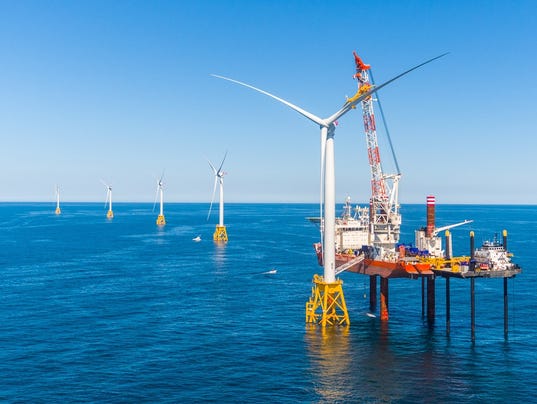So we enter a new year and a new debate on energy policy. Nice summary here from US Today of fossil fuel choices, a reemergence of nuclear, possibly, and, perhaps, a slow down on rnewables. What's left out of this discussion, which we think is extremely germane to shaping a new strategy around power, is continued efficiency, better energy management systems, storage and improvements in smart tech, micro grids and changes to our existing utility systems.
Pricing, delivery, ROI, and integration into smart grids will dictate winners from losers. Of course if we factor environmental cost--and health--into the equation, clean energy zooms to the top.

U.S. energy producers of all kinds see reasons for optimism as they start 2017, though the incoming Trump administration may spell trouble for some of a greener hue.
Among oil drillers, a recent uptick in prices suggests an end to a slump that has persisted since mid-2014, while natural gas, solar and wind energy companies aim to build on their gains in U.S. electric power markets in 2016.
Even the struggling nuclear sector can point to victories in New York and Illinois, where unprofitable reactors were saved by state actions last year.
That said, here’s a list of some of the most notable energy developments for the U.S. in 2016 — ones that may set the stage for how Americans produce and use energy in 2017.
The re-emergence of OPEC
For the first time since 2008, OPEC agreed to cut its oil output in a bid to boost prices and recover some market control. Saudi Arabia and other cartel members were joined by Russia and other non-OPEC nations in agreeing to curtail production by nearly 1.8 million barrels a day in 2017. It’s still too early to say whether the deal will stick, though Brent crude, the global oil benchmark, was up by 12% on Friday from Nov. 30, when OPEC met. Not bound by the deal are U.S. producers, whose output could jump thanks to higher prices.
Trump promises energy shakeup
Temperatures up, carbon emissions flat
The year 2016 is likely to be the hottest on record, surpassing record highs set in 2015 and 2014. This comes as the 2015 Paris climate agreement , signed by the U.S. and nearly 200 other nations to avoid a catastrophic increase in temperatures, took effect. Still, carbon emissions from burning fossil fuels are likely to rise only slightly globally in 2016 and fall a bit in the U.S., thanks considerably to reductions in coal use, the Global Carbon Project reports.
Solar leads power-grid additions
Electric-power companies expect to add more than 26 gigawatts of new utility-scale generating capacity to the grid in 2016, according to the U.S. Energy Information Administration (EIA). Ninety three percent of the additions come from three sources: solar (9.5 GW), natural gas (8 GW) and wind (6.8 GW). If those estimates bear out, 2016 will be the first year in which more solar energy is added to the grid than any other energy source.
Offshore wind makes its debut
Wind turbines are common off some European coasts, but none spun in U.S. waters until December. That’s when a five-turbine wind farm began operating off the shore of Rhode Island, providing power for about 17,000 homes. The Deepwater Wind project is a small but encouraging sign of the potential for a new source of electricity in the U.S. As it began feeding the grid, the Norwegian energy giant Statoil won rights to develop a much bigger project in waters offshore New York.
Bright spots for nuclear power
The news for the U.S. nuclear industry has often been bad over the last few years, with six reactors having closed since 2013 in the face of competition from natural gas and renewable energy. But things looked up in 2016 as New York and Illinois passed laws to save unprofitable reactors, partly because their carbon-free emissions support the states’ environmental goals. With Trump administration backing likely, the industry hopes other states will follow suit.
Natural gas run-up ends
The final numbers aren’t in yet, but U.S. natural gas production is expected to average 77.5 billion cubic feet per day in 2016, down 1.3 billion cubic feet per day from 2015, EIA reports. That would mark the first annual production falloff for gas since 2005, when the shale boom began. Low prices have contributed to the decline, but they are expected to pick up along with production as U.S. demand and exports grow.
Still, gas beats out coal
Natural gas production may be down but that didn’t stop the fuel from becoming the number-one choice for electric power plants, surpassing coal for the first time on an annual basis. EIA expects gas will account for 34% of the fuel needs of power plants in 2016, compared to 30% for coal. In 2015, each fuel supplied about 33% of U.S. electricity generation. EIA predicts that gas and coal will generate 33% and 31% of electricity, respectively, in 2017.
Now, on to another year in an era of remarkable energy changes.
Bill Loveless —@bill_loveless on Twitter — is a veteran energy journalist and podcast host in Washington.

No comments:
Post a Comment